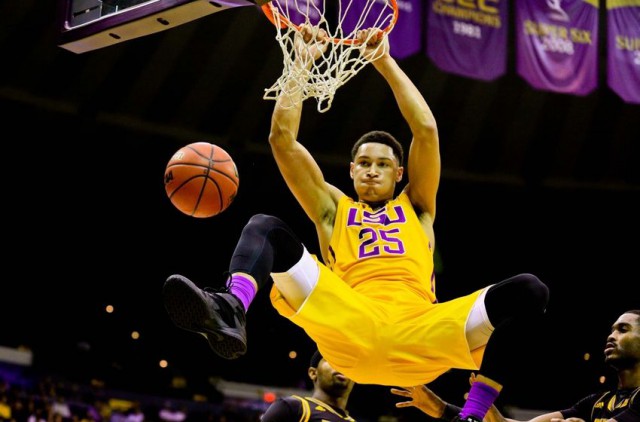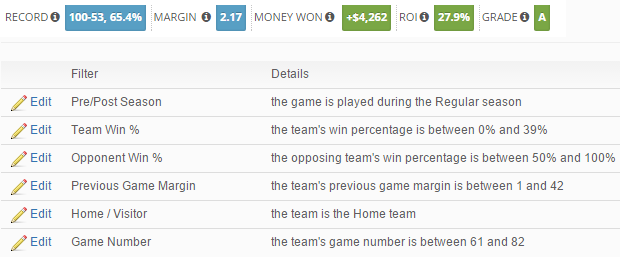
With Teams Tanking for Ben Simmons, How Can NBA Bettors Capitalize?
If there’s one thing that I have learned through my years of following the NBA, it’s nearly impossible to win a championship without a bonafide superstar. Lately it seems like teams need an all-time great in order to compete for a title. Sure there are anomalies like the 2003-04 Detroit Pistons that thrived by playing an unselfish brand of basketball and suffocating defense, but that’s the exception that proves to rule.
Recent champions include the Warriors, Spurs, Heat, Mavericks, Lakers and Celtics. These rosters included the likes of Stephen Curry, Tim Duncan, Dirk Nowitzki, LeBron James, Dwyane Wade, Shaquille O’Neal, Kobe Bryant, Kevin Garnett, Ray Allen and Paul Pierce. Every single player on that list was selected in the lottery, and three were the first overall pick.
[ Get all of our NBA Best Bet picks by signing up for a Sportsbook Insider Pro trial ]
Want to look back even farther? Elite championship teams from the 80’s and 90’s like the Bulls, Rockets, Pistons, Lakers and Celtics were similarly star-studded. Michael Jordan, Scottie Pippen, Hakeem Olajuwon, Isiah Thomas, Magic Johnson and Larry Bird were all top-five draft picks and future Hall of Famers.
There’s always a possibility that you can land one of these franchise cornerstones through free agency, but that opportunity is only available to select big market cities. For a majority of the league, the most common means of acquiring a star player is through the NBA Draft and the best way to procure a top pick is by posting one of the league’s worst records.
Being a mid-tier NBA team is the equivalent of basketball purgatory. The elite teams contend for titles and the worst teams are hoping to land that superstar who can take them to the next level. That’s the reason why many fans and analysts have become enamored with tanking — i.e. trading away your best players in an attempt to lose as many games as possible and increase your probability of landing a top draft pick.
Most general managers will deny that tanking exists, but some of the past examples are undeniable. The 1996-97 San Antonio Spurs shut down their role players after David Robinson suffered a season ending foot injury. The next season they drafted Tim Duncan.
The 2002-03 Cleveland Cavaliers traded away arguably their best player (Andre Miller), dealt one of their top scorers (Wesley Person) for pennies on the dollar, and allowed Ricky Davis to play huge minutes despite his allergy to playing defense. Head coach John Lucas would later state that owner Gordon Gund had intentionally traded away these players in order to lose games, and the next season the team drafted LeBron James.
Current teams like the Minnesota Timberwolves and Philadelphia 76ers have embraced the tanking strategy which was popularized by the Oklahoma City Thunder. This strategy involves building around a young core, trading away useful players for future assets, and accepting losses as these green players gain experience and learn on the job. This strategy requires some luck, but for some general managers it may be their only option.
With the trade deadline rapidly approaching, we’re only weeks away from this tanking movement kicking into full gear. The league’s cellar dwellers will inevitably trade away their best players for future draft picks, increase playing time for their young players and determine who fits into the team’s long-term plans.
To be clear, tanking isn’t something embraced by the players. These are professional athletes who will always try their hardest — even if it’s for selfish purposes. Tanking is a tactic employed by general managers, who implore their coaches to play inexperienced players. These players benefit by learning from their mistakes, and the franchise benefits when the team loses and lands the opportunity to draft a transcendent talent.
This season, that franchise-changing talent is LSU forward Ben Simmons. The 6’10” freshman is incredibly smooth with elite athleticism plus the court vision and passing ability of a point guard. On the season, Simmons is averaging 19.4 points, 12.3 rebounds and 5.0 assists per game and has drawn some comparisons to LeBron James. He’s also listed as a -450 favorite to be the first overall pick in June’s draft.
Knowing that the tanking process will begin within the next few weeks, we believed that we could create a profitable betting system by fading the league’s worst teams in late season games. Our first step was classifying “late season” games, so we decided to focus on games played after the All-Star Game. We found that teams have typically played 53 games before the break, so we wanted to highlight instances where the game number was 54 or higher.
Once we had narrowed our focus to late season games, we wanted to see how the league’s worst teams had fared. Considering teams who are hovering around the .500 mark are still competing for a playoff spot, we chose to examine teams with a winning percentage of less than 40%. Since 2005, teams fitting these criteria have gone just 1,206-1,284 ATS (48.4%) in late season games versus 2,699-2,586 ATS (51.1%) in early season games.
This trend helped confirm that teams do tank in late season games and, more importantly, showed that these teams also struggled to cover the spread. This system had all the components of a “fade” system, meaning we would bet against any teams who fit these criteria.
We also believed these results could be improved when the opposing team was contending for playoff position. To accomplish that, we looked at instances where the opposing team’s winning percentage was at least 50%, and the record of the system dropped to 647-719 ATS (47.4%). When we turn it into a fade system, we can see that the system is already profitable.
We hypothesized that tanking teams would be unlikely to win consecutive games, since that would be detrimental to their goal of landing a high draft pick and drafting a franchise player. By examining tanking teams following a victory, our record improved to 238-176 ATS (57.5%) with +51.47 units won. Since we were able to increase our overall units won while reducing our sample size by roughly 950 games, our return on investment (ROI) skyrocketed from 3% to 12.4%.
Previous research has shown that home-court advantage has been extremely overvalued, so that seemed like the perfect final addition to our fade system. In an intriguing turn, fading home teams has been far more profitable (131-81 ATS, +44.62 units) although visitors (107-95, +6.84 units) have still offered a positive expected value.
It was also interesting to see that by examining games played in the last quarter of the season, we were able to increase our ROI despite a slight decrease to our overall units won.
At the time of publication there were six teams with a winning percentage of 39% of lower. These are the only teams that will potentially fit the criteria for our system.
- Philadelphia 76ers (12.0%)
- Los Angeles Lakers (21.3%)
- Phoenix Suns (26.7%)
- Brooklyn Nets (28.4%)
- Minnesota Timberwolves (33.3%)
- New Orleans Pelicans (36.5%)
The New York Knicks (39.5%), Sacramento Kings (40.0%) and Milwaukee Bucks (41.3%) are both on the fringe, and could fall under the 39% threshold with a short losing streak. We should also point out that the Celtics own the Nets draft pick, which decreases their incentive to tank. The Lakers will have to convey their draft pick to the 76ers if it’s outside of the top-three, which increases their incentive to tank.
Bet Labs users are able to copy this system directly from our Think Tank, and bettors are able to view the latest odds and trends from our free NBA odds page.
Have any questions for the staff at Sports Insights? Utilize our live chat to speak with a customer service representative or e-mail us at help@sportsinsights.com.
David Solar is the Content Manager at Sports Insights and can be reached directly at David@SportsInsights.com.
4/16/16: This system went 6-2 ATS (+3.65 units) during the 2015-16 NBA season.



JB
03/23/2016 at 4:20 pmGood stuff. But wondering why these aren’t being included with your NBA Best Bets?